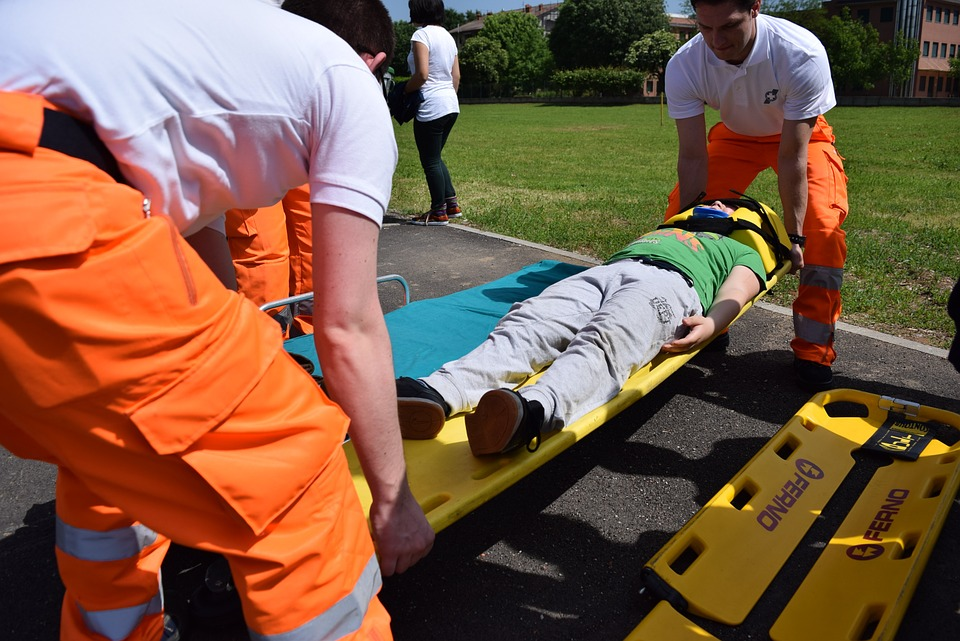
What Is a First Responder and What Do They Do?
First responders are the first to arrive and help at emergency scenes, which can include car accidents, natural disasters, or even terrorist attacks. Individuals who work as first responders must...
First responders are the first to arrive and help at emergency scenes, which can include car accidents, natural disasters, or even terrorist attacks. Individuals who work as first responders must obtain certifications and receive specialized training.
Collectively, this group is the backbone of safety in our society. First responders require additional support apart from their central support systems. The Department of Homeland Security, Science, and Technology Directorate (S & T) assists all first responders, working across jurisdictions to further educate, support and ensure their safety.
What Do First Responders Do?
The duties of a first responder depend upon their specific training, position, and specialty. These individuals assess a natural or manmade threat and take steps to de-escalate a situation to prevent further injury or incident. They may provide life-saving care to persons injured or ill, or transport those who need additional attention to a medical facility. They are charged with protecting public safety and wellbeing, even when it means putting themselves at risk to protect or defend others. Although not all first responders are members of the armed forces, they are often associated with military service. The risks, mission, and camaraderie they share makes them unique among public servants.
Who Is Considered a First Responder?
There are many different types of first responders, specializing in aiding in specific types of emergencies. EMS, firefighters, and police officers are all examples of first responders. Members of the military also can constitute first responders in specific situations. Service members from the Army, Navy, Air Force, Marines, military reserve, and National Guard may all be called upon to help address emergencies, disasters, or provide urgent care and assistance.
Emergency Medical Services (EMS)
Emergency medical services (EMS) refers to medical professionals who respond to, treat, and transport people in health crises or life-threatening situations. Emergency Medical Technicians (EMTs), paramedics, doctors, nurses, and other supporting medical personnel all can be EMS members. They work separately and in tandem as a coordinated response mechanism. Depending on the situation, they may mesh with other first responders and government officials, volunteers, and nonprofits. They work side by side with other first responders, and are the group that primarily assists in emergency care.
Firefighters
Firefighting can be a dangerous and life-threatening job, and thousands have lost their lives in the spirit of protection. Both paid and volunteer firefighters are first responders. Besides responding to fires, firefighters may also be called to the scene of other emergencies such as auto accidents. They may be trained to provide basic first aid, or if cross-trained as paramedics to provide advance life support and transport to the hospital as needed.
Firefighters must wear several hats. While their primary task is extinguishing fires, other roles may include prevention, salvage, and even search and rescue operations.
The United States Forest Service uses smokejumpers for aerial firefighting. These specially trained firefighting crews concentrate on operations in heavily forested locations. Their efforts in fire containment can save lives and help reduce damage to forests and wildlife. They work hard to suppress and isolate fires from spreading and reaching more populated regions and residential areas.
Police Officers
Police officers and other law enforcement personnel are a critical group of first responders. Police officers are expected to protect people, property, and the community at large. They must be prepared to respond to a variety of emergencies, from minor traffic incidents to major natural disasters. In times of crisis, police officers may align with EMT and firefighters to provide additional safety measures and precautions. However, the central role of their job is to protect others and enforce the laws.
Their duties include apprehending criminals, and preventing and detecting crimes. These tasks are performed to prevent violence against people, destruction or theft of property and trafficking of illicit substances. As such, officers’ duties can subject them to physical altercations during encounters with suspects. Additionally, their functions may extend well after an event has transpired, such as when solving crimes and assisting in the prosecution of criminals. Crime-solving can take many months, depending on the crime, and they may be called to court to testify in criminal prosecutions.
The Importance of First Responders
Without first responders, our lives would be far more difficult. If it weren’t for the bravery and skills of those who protect us, we wouldn’t have the peace of mind that comes with their presence and abilities. Where would we be without an EMS who arrives on the scene of an accident to give emergency care and assistance? Firefighters put their lives on the line while protecting others from harm, as do police officers. All of these professionals keep our society functioning at some of the most basic levels.
Appreciating First Responders
First responders are people too. They experience stress, fear, and uncertainty, but those feelings are a part of their daily routine and professions. Having these men and women to protect our communities benefit our safety, and they risk their lives and wellbeing to do so. Giving back is the way to honor and support them, and to show the respect and admiration they deserve.
Every year, National First Responders Day takes place on October 28th. It’s essential to appreciate and support and remember them year-round as well. Challenge coins can be used to show appreciation and honor first responders for their service. Custom challenge coins can even be designed for specific disciplines, honors or achievements. Although it began as a military tradition, today, challenge coins are given to EMS, firefighters, and police in recognition of their service to others.
You can also support local fundraising or donation efforts to organizations and charities which exist to support them. These organizations can include non-profit businesses, in addition to local community support programs.